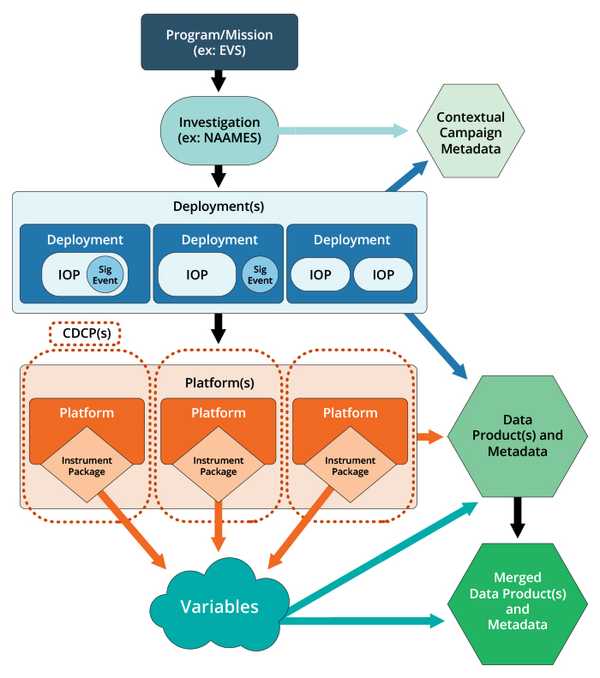Glossary
Introduction
The Airborne Data Management Group (ADMG) uses the following formalized definitions to build the NASA Airborne and Field Investigation Inventory, also called the Catalog of Archived Suborbital Earth science Investigations, or CASEI.
Consistent terminology is required to organize the wide variety of airborne and field investigation metadata; therefore, these definitions are used to communicate the ADMG terminology to inventory users. Where possible, definitions are made to agree with those in standard use in the communities served by ADMG and some are similar to those in the EOSDIS Glossary. Note, however, that ADMG definitions may or may not match similar terms used by other entities within or external to NASA. These ADMG definitions of inventory-specific terms are provided below.
A technical note documenting ADMG CASEI Inventory Terms Definitions was approved by NASA Earth Science Data Systems (ESDS) and is available via their website.
Structure of Airborne and Field Investigation Components
Many terms are related and represent the hierarchical organization of investigation information structure as outlined below:
NASA Project, Program, Mission
- Field Investigation (also called campaign) — supports NASA goals
- Deployment — occurs within a Field Investigation (one or more per investigation)
- Significant Event — within a Deployment (may/may not occur, can be outside IOP)
- IOP (Intensive Operation Period) — one or more per deployment, must be within a deployment
- Deployment — occurs within a Field Investigation (one or more per investigation)
This relationship is shown in the following figure representing the information model used in inventory development. The goal of this ADMG effort is to identify the terms used for inventory construction and identify the correct level within this set of definitions. Synonyms for a given term that we have found to be used by various communities are listed. It is important to note that these synonyms are only words we hear used. ADMG uses the contextual information from authoritative sources to translate used terms to inventory terms. The various words used do not always relate to the same word in this ADMG term list. For example, the synonym mission for a flight is in no way connected to the term mission as defined by ADMG. To aid with translation between existing words and these inventory terms, decision trees are utilized to ensure consistent decision making by the curation team members.
Note: ADMG uses the terms “instrument” and “sensor” interchangeably.
Terminology map
Assigned DAAC
Continuous Data Collection Period (CDCP)
Note: There may be instances of individual instrument non-operation that result in missing data within a CDCP; this does NOT negate the fact that a single CDCP has occurred. For example: A sensor of an aircraft’s instrument package may not operate for one flight during a deployment. The flight is still considered an individual, complete CDCP.
Calibration/Validation (Cal/Val) Campaigns
Deployment
Data Product
Note: Data products may also be referred to as data sets, derived products, or data collections (as used in Earthdata Search).
Field Investigation
Note: ADMG uses the terms “field investigation” and “campaign” interchangeably to represent this level of the effort. While various individuals, science teams, or research groups may also refer to ADMG’s field investigations as airborne investigations, airborne campaigns, field campaigns, campaigns, projects, field missions, deployments, or Intensive Operation Periods (IOPs), within ADMG and CASEI, terms such as deployment and IOP have other specific uses, defined herein.
Facility Instrument
Field Investigation Data Collection
Note: A field investigation data collection may also be referred to as a campaign collection, dataset series, data set series, or data product group.
Geophysical Concept
IOP - Intensive Operation Period
Instrument Package
Note: Note that individuals, science teams, or research groups may also refer to the instrument package as the instrument payload, particularly for airborne platforms.
Mission
Partner Organization
Note: Partner organizations are not limited to universities and may include, for example, other government agencies or departments, organizations from other countries, or private companies.
Platform
Significant Event
Variable
Note: A parameter may also be commonly referred to as a parameter, observation, or measurement.
